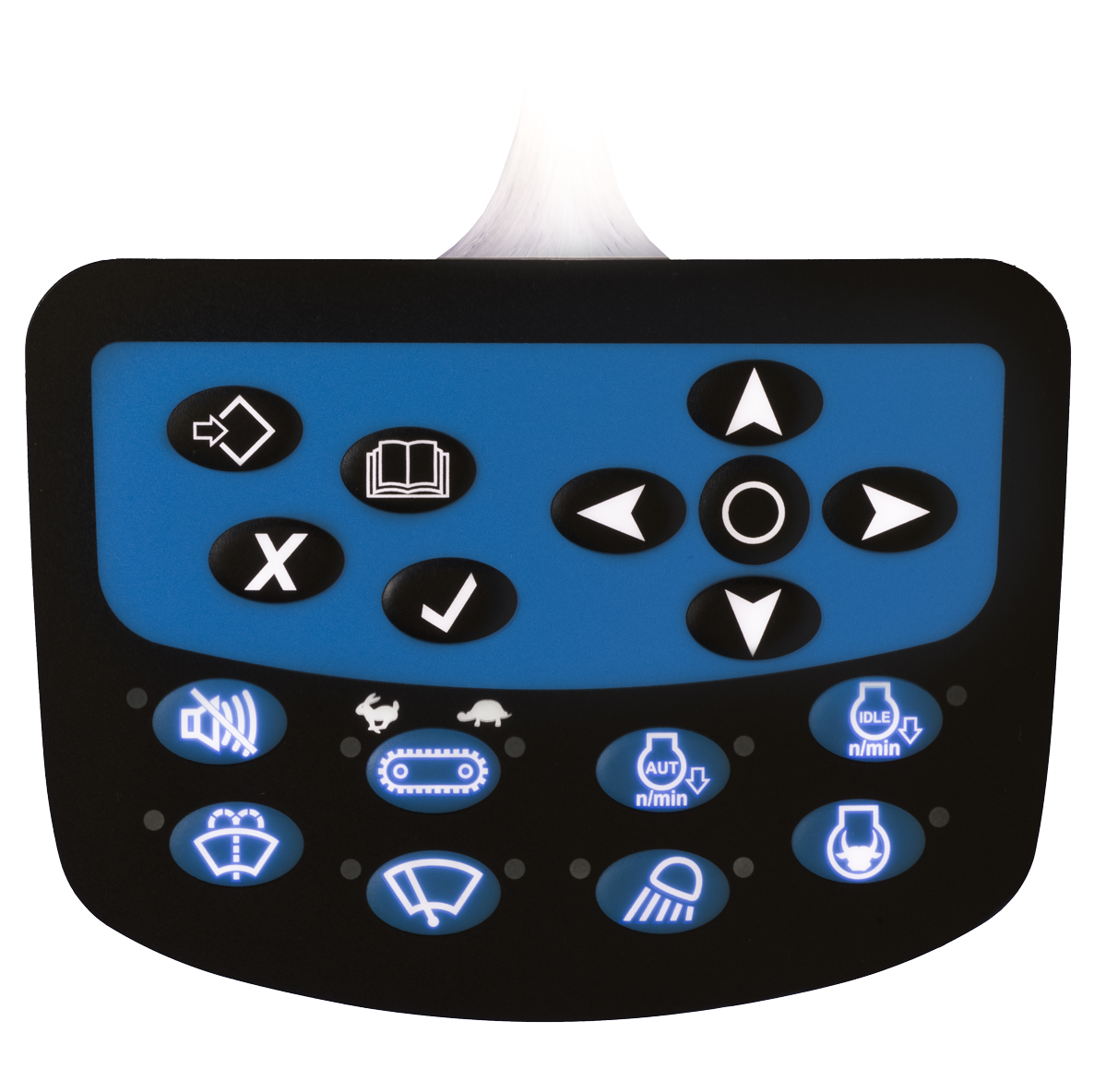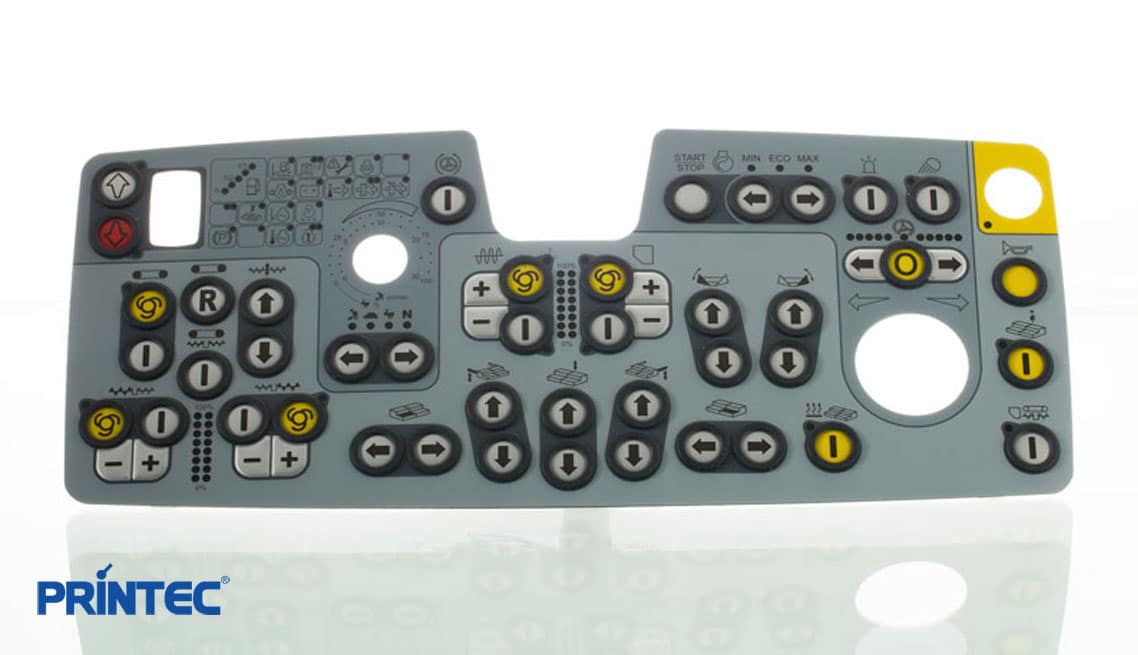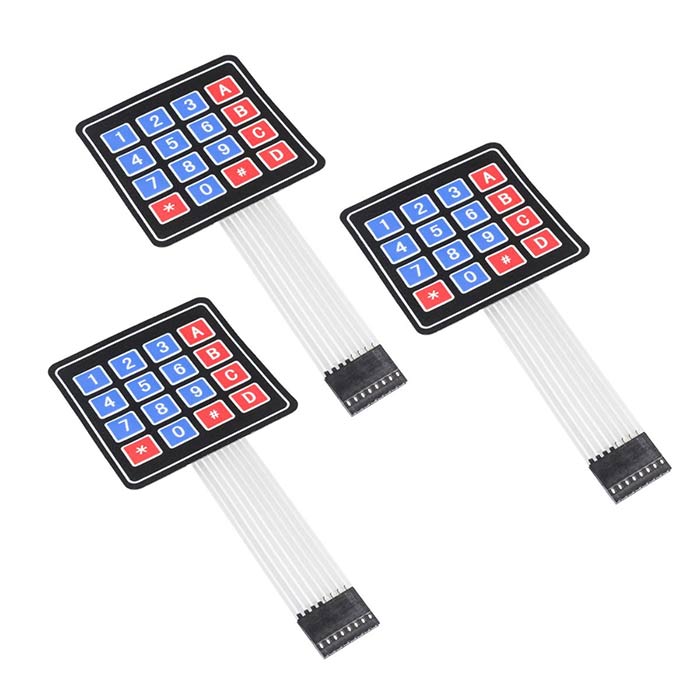When special application needs arise, a specialized membrane switch manufacturer is the best choice.
When special application needs arise, a specialized membrane switch manufacturer is the best choice.
Blog Article
Everything About Membrane Switch Over: Understanding Its Layout and Performance
When you assume regarding the control interfaces in modern gadgets, membrane layer switches frequently come to mind. Let's discover what collections membrane switches apart from various other control systems.
What Are Membrane Layer Buttons?

Their seamless nature makes them very easy to clean and immune to dust and dampness, a vital function in numerous environments. Membrane layer switches can likewise be tailored regarding form, size, and graphics, permitting suppliers to produce one-of-a-kind user interfaces customized to specific items. And also, they're lightweight and slim, which aids in minimizing the overall bulk of tools. On the whole, membrane switches play a considerable function in boosting customer experience across a large range of applications.
Exactly How Membrane Changes Work
When you push a key on a membrane layer button, it turns on a straightforward yet reliable mechanism. The leading layer, usually constructed from versatile product, pushes down onto a conductive layer underneath it. This action bridges the space between conductive traces, finishing an electrical circuit. As quickly as the circuit shuts, it sends out a signal to the tool's controller, which analyzes your input.
You'll see that the responsive comments differs based on the button style, supplying either a soft click or a more pronounced feedback. As soon as you launch the key, the membrane returns to its original position, reopening the circuit and quiting the signal. This process happens almost instantaneously, ensuring a receptive customer experience.
Membrane buttons are prominent due to their toughness and resistance to dirt and dampness, making them suitable for numerous applications, from house home appliances to clinical gadgets. Recognizing this procedure aids you appreciate their widespread usage.
Secret Elements of Membrane Switches
Comprehending the vital elements of membrane layer buttons is fundamental for comprehending their functionality and layout. At the core, you'll find the graphic overlay, which gives the aesthetic user interface for users. Below that, there's a spacer layer that separates the circuit layers, guaranteeing that they don't make contact till pressed. The circuit layer is where the magic occurs; it consists of conductive traces that finish the circuit when you push the switch. One more crucial component is the sticky support, permitting the switch to comply with surfaces securely. The protective layer guards versus ecological aspects and put on, prolonging the button's lifespan. Each component plays a significant role in ensuring trusted efficiency and customer interaction. By comprehending these parts, you'll get insight right into just how membrane switches run and their relevance in numerous applications.
Materials Utilized in Membrane Layer Switch Style
The performance and longevity of membrane switches heavily depend upon the materials used in their layout. You normally run into polyester and polycarbonate as primary substratums due to their superb stamina and flexibility. These products stand up to scrapes and chemicals, making them ideal for requiring environments.
The conductive layers frequently make use of silver or carbon, chosen for their reliability and conductivity. membrane switch manufacturer. Silver provides remarkable performance, while carbon is a cost-effective option. For the overlay, you could consider a matte or glossy coating, relying on your visual demands and user experience
Make particular to pick adhesives that hold up against environmental aspects like temperature and moisture. Choosing the appropriate products will assure your membrane button stands the test of time.
Design Factors To Consider for Membrane Switches
While making membrane layer switches, it's important to take into consideration various elements that influence their functionality and individual experience. Beginning by focusing on the layout and switch size; ensure they're user-friendly and simple to navigate. Take into consideration the responsive feedback you want to offer-- will customers need an obvious click or a softer touch? Furthermore, assume about the products you'll use, as they'll impact resilience and looks.
Don't ignore the visuals style; clear labeling and color comparison are significant for exposure. Confirm your style suits ecological elements, like dampness or temperature variations, which might influence performance. Bear in mind the relevance of testing models with genuine users to gather comments and make needed adjustments. This repetitive procedure helps you improve the layout, validating it satisfies both functional and visual requirements effectively. By thoroughly taking into consideration these aspects, you'll produce a membrane layer switch that improves functionality and fulfillment.
Applications of Membrane Layer Buttons
Membrane layer switches are versatile elements found in numerous applications, from commercial devices to consumer electronic devices. You'll see their influence in machines that require sturdy interfaces and in tools that benefit from streamlined designs. Comprehending these applications aids you appreciate the performance and practicality of membrane switches in day-to-day modern technology.
Industrial Equipment Use
When you're looking to boost the performance of commercial equipment, membrane layer switches supply a dependable solution that combines sturdiness with user-friendly style. These switches are perfect for extreme settings, providing resistance to dirt, wetness, and chemicals. Welcome membrane layer switches to streamline your operations and boost total performance.
Customer Electronics Combination
In the domain of consumer electronic devices, membrane layer buttons play click to investigate a necessary duty in enhancing customer my review here interaction and gadget capability. You'll discover them in devices like microwaves, push-button controls, and pc gaming consoles, offering a seamless method to interact with modern technology. Their smooth design permits easy integration into numerous products, making controls intuitive and user-friendly. With their ability to incorporate graphics and backlighting, you can enjoy a modern visual that complements the tool's total appearance. Membrane switches likewise guarantee sturdiness and resistance to dust and wetness, prolonging the life expectancy of your electronic devices. By selecting membrane layer switches, you enhance not just the capability yet also the design of your tools, making day-to-day communications smooth and pleasurable.
Benefits and Disadvantages of Membrane Layer Buttons
While membrane layer switches use a variety of advantages, they likewise come with some downsides that you need to consider. One considerable benefit is their portable design, making them excellent for space-constrained applications.

Membrane layer switches can have a shorter lifespan contrasted to mechanical buttons, particularly under heavy use. They can additionally be less tactile, which could influence customer responses during operation. Balancing these pros and cons will certainly help you establish if membrane switches are the ideal fit for your project.
Often Asked Questions
How Much Time Do Membrane Switches Usually Last?
Membrane switches over usually last between 5 to one decade, depending on usage and environmental conditions. You'll desire to evaluate aspects like wear, direct exposure to dampness, and temperature variations to determine their long life properly.
Can Membrane Layer Changes Be Customized for Particular Styles?
Yes, you can personalize membrane layer switches to fit particular styles (membrane switch manufacturer). You'll have the freedom to choose shades, shapes, you could try these out and formats that match your project's demands, ensuring they mix flawlessly with your general aesthetic
What Is the Price Variety for Membrane Switch Production?
The cost variety for membrane layer button manufacturing commonly falls in between $1 and $10 each, relying on aspects like layout complexity, amount, and products. You can obtain quotes from manufacturers to locate the most effective alternative.

Are Membrane Layer Switches Over Water Resistant or Resistant?
Membrane layer buttons can be made to be water resistant or immune, depending on products used and building and construction approaches. If you require them for wet settings, assure you define those demands throughout the layout procedure.
Exactly How Do Membrane Layer Switches Over Contrast to Standard Switches?
Membrane layer buttons are usually thinner and much more flexible than conventional buttons, providing a sleek design. They're frequently much easier to clean and integrate, however might not give the tactile comments you're used to with mechanical options.
Final thought

Report this page